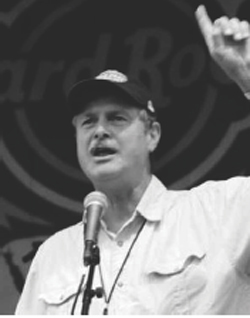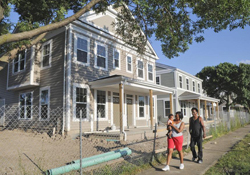History of Falls casino spending shows there wasn’t a plan
By Frank Parlato

It makes one wonder how the city ran in BC (Before Casino).
In any event, few understand how much money Niagara Falls got from the Seneca casino compact and what happened to the money.
Most know that the Senecas paid from 2003-2008 and then stopped paying in 2009.
According to records obtained from a Freedom of Information request, the total casino revenue received by the City of Niagara Falls to date is $69,338,345.
Only two mayors have been in office during the period Seneca paid: Mayor Vince Anello, whose administration received almost $17 million and the administration of Mayor Paul Dyster has received more than $52 million.
So what happened to the money?
The Niagara Tourism & Convention Corporation (NTCC), a secretive, private corporation that accomplished little other than create a website and sell bus tours and is a political patronage haven, got $5 million. The NTCC board is closely associated with Maid of the Mist Steamboat Company owners James and Christopher Glynn and includes Mayor Paul Dyster, USA Niagara President Chris Shoepflin and others in the Dyster inner circle.
Among things casino money paid for was NTCC President John Percy’s $30,000 trips to India, allegedly to promote tourism. NTCC executives stayed in $1,500-a-night rooms and spent lavishly at restaurants and other entertainment venues. Liquor and massages ate up tens of thousands more.
Niagara Falls Memorial Medical Center and the Niagara Falls School district each got about $3.8 million. The airport got $1 million.
The Urban Renewal Agency got $2.6 million. And while it is hard to determine what Urban Renewal has done, a look around the city shows scant evidence of renewal over the last several years.
The Niagara County IDA, a corporate welfare organization set up to offer tax free status and tax incentives to politically-connected businesses, received $2 million.
Even the most ardent supporter of the IDA concept would have a tough time arguing that the hundreds of millions of dollars doled out in a desperate attempt to keep and attract business has done much to help here. While millionaires pay the IDA pennies on the dollar to get taken off the tax rolls, the shrinking middle class taxpayers and competing businesses are left to make up the difference.
While the agreement with the state says that Niagara Falls is supposed to use the casino money for economic development, it is hard to see how Hope VI, a 282-unit public housing project, qualifies. But they got $6 million. Yes, that’s right, a housing project was somehow construed – bizarrely- as economic development!
All told, Hope VI cost more than $80 million in federal, state and county taxpayer money to build. Taxpayers paid $283,000 per unit to house poor people. You could buy a mansion in the city for that price. And while thousands of decent properties in the city are vacant and hundreds for sale at $30,000 - $50,000, Hope VI got $6 million in casino money, the biggest recipient of casino cash of them all.
As State Sen. George Maziarz, a critic of the HOPE VI project, said, "Think of the streets that could be paved with the millions the city spent on this."
Make no mistake, people got rich off the HOPE VI project - which of course was what it was all about. From a practical point of view, Hope VI sucked life out of Niagara Falls by altering supply and demand - by diverting people out of neighborhood housing and lumping them into government housing. It took 282 families out of neighborhoods and decreased demand for local housing, increased vacancies, reducing property values and adding to blight.
The Underground Railroad Heritage Commission, dedicated to promoting phony history about Harriet Tubman and other historical frauds, was slated to get $350,000 a year, but since the Senecas stopped paying three years ago, the bogus enterprise got only one year’s allotment. The Reporter broke the news this summer that the required legal reporting of where the money went was not filed by attorney Larry Rubin more than two years after it was due.
Where did the money go?
Then there is the courthouse and public safety building on Main Street. The city borrowed $45 million to build it. The city has an annual $2.3 million payment for 30 years. Who the hell thought it was a good idea to finance a mortgage on the back of a casino agreement that could go south on a moment's notice?
City officials told the media, “We never thought this would happen.”
But it did.
Today, the courthouse, in yellow brick, cocked at an angle not perpendicular to the street, with an odd, ugly misrepresentation of the old suspension bridge as an entrance way, stares at us as an ugly reminder of our inept leadership, of greedy politicians and businessmen and potential corruption.
Something is amiss: Reeds Construction Data's study of 25 American cities reports that courthouses and jails, even in expensive-to-build places like New York City, where unions, bureaucracy and corruption through kickbacks and backdoor deals are a way of life, were built for under $275 per square foot. Our courthouse cost $415 per square foot, making it one of the most expensive (per square foot) courthouses in the history of the USA.
It is a $20-million building that somehow cost almost $50 million to build.
Make no mistake about it, developers who contributed to Mayor Dyster built it and they made a fortune on the project.
Dyster also gave to his friends, relatives (his father is on the board) and political supporters at the NACC, a not-for-profit arts and crafts studio, $100,000. He gave $500,000 to the custom house. Another million went to the train station.
Ah, the train station: The city is betting on train travel making a comeback. Presently, there is an average of 70 riders per day at the train station on Lockport Street. Once the new $40 million train station opens, Dyster officials predict it will go up to 130 per day -- that's boarding and alighting. Sixty-five going one way; 65 coming back.
"The train station?," said Councilman Bob Anderson. "You would think the people who make these decisions would sit down with people who breathe the fresh air and say, 'What do you think about this?' Think about it. We could use this money to do some beautiful things to enhance the city's growth. Who is to gain by this project? The taxpayers? I don't think so."
However there are millions in engineering fees and tens of millions in construction work and alas, who are we kidding- these are campaign contributors. See our earlier reports on the topic.
And how about operating costs?
“(Rents) in all likelihood, will not cover the costs of operating the train station. There will probably be a deficit. What that deficit is, I don't know," said city planner Tom DeSantis.
A peculiar statement and indicative of how government projects are done these days. To not know what it will cost to maintain it is like saying, "I will buy a house. But I don’t know how much the mortgage will be.”
One thing is certain, the train station will costs taxpayers in excess of $1 million per year to maintain, according to low-end projections. That means it will cost taxpayers $22 to put a rider on a train. In some cases that is more than the ticket price.
Of course, much of the spending of casino money was less spectacularly stupid. It went almost straight into the hands of millionaires. Some $900,000 went to the NFC, which then gave the money to millionaire Faisal Merani so he could improve one of his hotels. LiRo Engineering, campaign supporters of the mayor, received $28,000 to design a basketball court on 11th St. It cost more to design a basketball court than to build one. But no worry, they designed it wrong anyway and it needs to be redone.
The rich Seminole Nation of Indians, owners of Hard Rock, were given $507,000 to put on free concerts without a requirement to disclose how they spent the money.
Another $9,000 went for a “Boundary Waters concert.” (No I am not making this up.)
And $26,000 went to Toby Rotela for a blues festival. Rapids Theater got $250,000.
A bunch of businesses, including some that have closed like Shorty's, Mary’s Soul Food and Edy J's., along with Niagara Metals, Erdco, Gadawskis, assorted gas stations and others got $375,000 in grants or loans through NFC, funded by casino cash.
The Red Coach Inn got $50,000.
Another $30,000 of casino money went into the Buffalo Niagara Economic Development Summit - which must have been a high level meeting where they taught government officials how to spend like drunken sailors.
And $840,00 went to a consultant for designs and for work on the Ice Pavilion so that taxpayers can subsidize the few who play hockey. Some $500,000 went for a memorial for Veterans in Hyde Park.
Some $8,100 went to Mulligan's restaurant for tables and chairs and another $1,235 for bar stools at the golf course. $21,000 for a something called the National Urban Fellow program. And he’s a jolly good fellow, no doubt.
A total of $13,000 went into bathrooms in city hall; $91,000 went to a politically connected consultant for the design of roads; $23,000 went for landscaping; $9,000 for the Centennial Circle downtown – not for the undersized landscaping – but for a single change order.
$10,000 for landscaping in the “gateways into the city.” The purchase of the Lotus Spa on 3rd street, a massage and acupressure spa that turned out to be a brothel. That was $65,000. And $263,000 for basketball courts. A storm event flooding study cost $21,500.
There were change orders for fencing at the Hyde Park ball fields. The council chambers got a new sound system for $31,918.
The Ezekiel project got $54,000 and to date no one knows what they did with the money.
The Underground Railroad coordinator got $80,000. The former economic czar of the city, Peter Kay, got $167,000. The Holiday Market got $225,000.
Another $75,000 was spent on streetscape for Third St. Another $650,000 was given to the multi-millionaire Faisal Merani.
And the beat goes on.
In fairness, about $3.2 million was spent on roads, the Gestapo-like “zoom” team, police cars, fire engines, road repairs and another million was spent on demolitions.
Fire engines were purchased for $302,000. A pothole killer was rented for $130,000 and $150,000 was spent on paving. $52,000 went into a tree removal plan.
Other than a few necessary items and help offered to the hospital and schools, what do we have to show for it?
I mean $69 million later and what economic development have you seen?
Have you ever heard stories of people who won the lottery, quit their job, started spending and in a few years lost everything?
That’s what happened here.
There was no plan: Just spend by the seat of your pants.
Meantime, a sovereign nation, called the Seneca Nation, is devouring the city. It has a monopoly on gaming and the ability to open up tax-free stores, restaurants, hotels and even a gas station and smoke shop, while taxpayers in Niagara Falls are among the highest taxed people in the country and among the poorest.
Gone with the wind, as Mayor Dyster might say of the casino money.
The mayor and the council are waiting for more, waiting for the back payments of the Seneca like a hungry crow following behind a bull, waiting for his testicles to fall off for a tasty snack.
But they never do.
No reflection. No plan. Just give us the money and let us start our spending again.
And frankly, Niagara Falls taxpayers, with that kind of money, who gives a damn?

